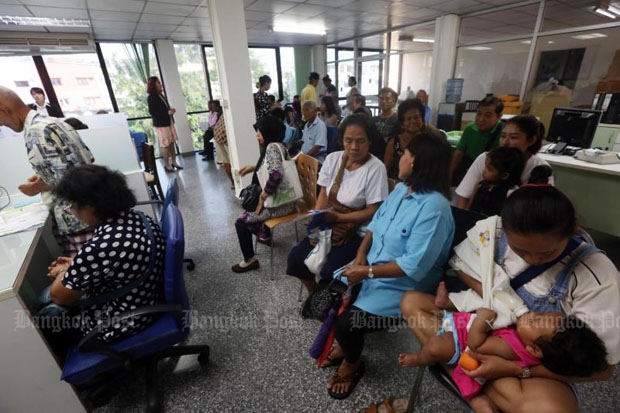
The number of poor in Thailand fell to 4.9 million last year from 7.1 million in 2014 as the country's economic growth and myriad state policies helped raise incomes, says the government's planning unit.
The "Poverty and Inequality in Thailand" survey by the National Economic and Social Development Board (NESDB) reported the proportion of poor fell to 7.2% of the population in 2015 from 10.5% in 2014.
Thailand's poverty line was 2,575 baht per person per month in 2013, 2,647 baht in 2014 and 2,644 baht in 2015, the NESDB said.
NESDB secretary-general Porametee Vimolsiri said Thailand's economic growth rose to 2.8% in 2015 from 0.8% in 2014 as the government introduced a number of policies to tackle poverty and inequality.
But despite the improvement in income inequality, the gap remains considerably high, he said. Problems persist because of a concentration of financial assets and land among the rich and unequal access to quality services across the income spectrum. These problems could be further aggravated by technological advancement, global warming and the country's ageing population, said Mr Porametee.
He said the richest 10% of Thais enjoyed 35% of the country's income in 2015 and 61.5% of the land plots.
In a related development, the NESDB reported yesterday the country's unemployment rate fell in the third quarter as working hours, wages and labour productivity rose. The rate was 0.94% of the workforce in the period, down from 1.08% in the second quarter and 0.97% in the first quarter.
The total labour force in the third quarter stood unchanged from 38.7 million year-on-year, but it rose from 38.2 million in the second quarter.
The NESDB reported employment in the farm sector declined for a sixth straight quarter because of a decline in agricultural activity and flood damage to farmlands, while it rose in the non-agricultural sector for a sixth straight quarter, as the construction, retail/wholesale, hotel and restaurant sectors added jobs.